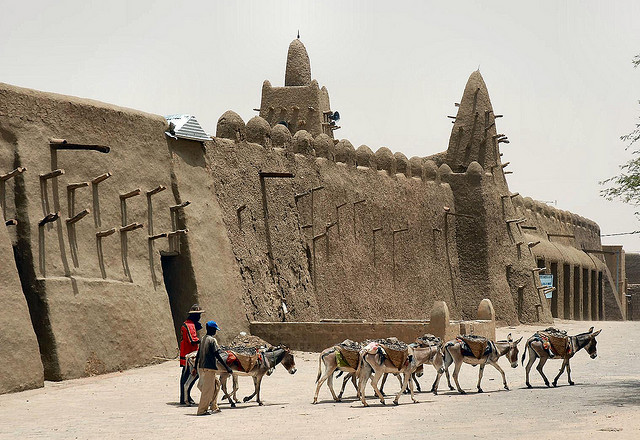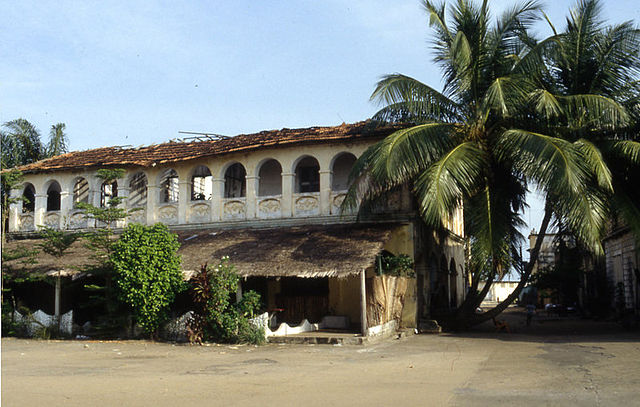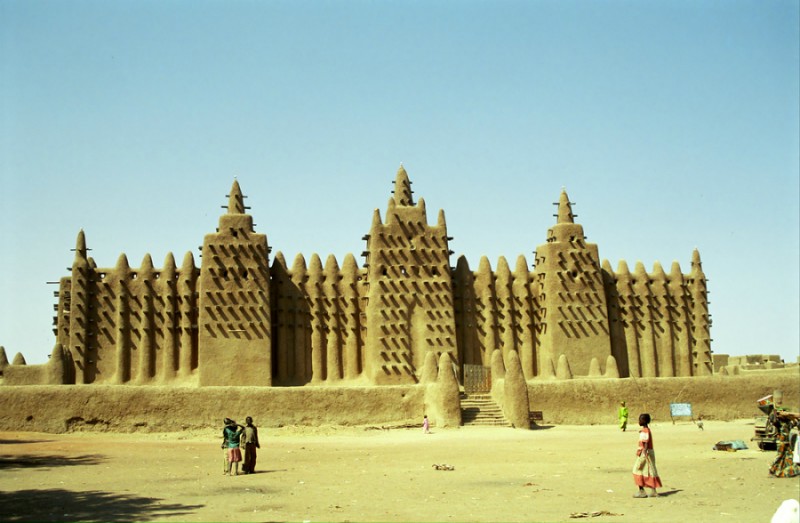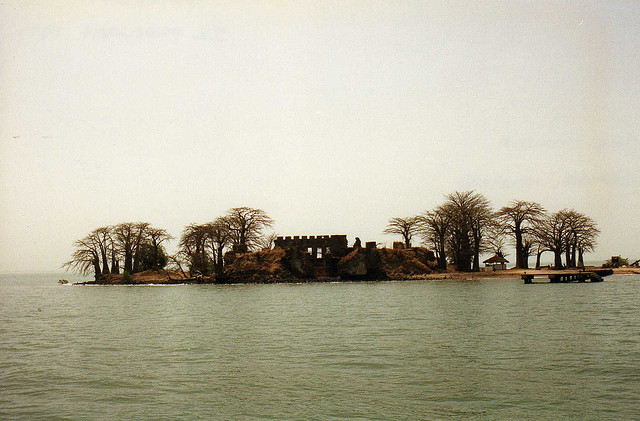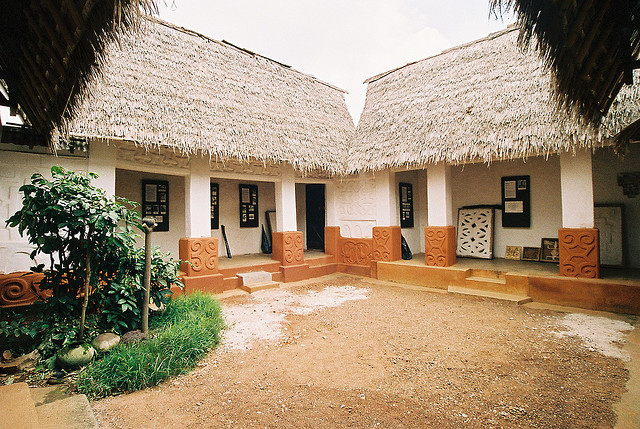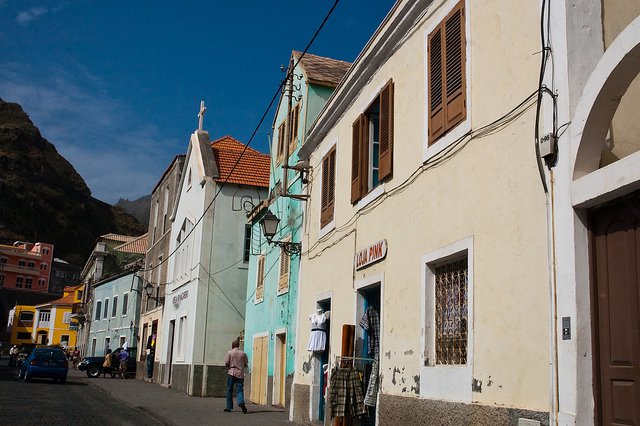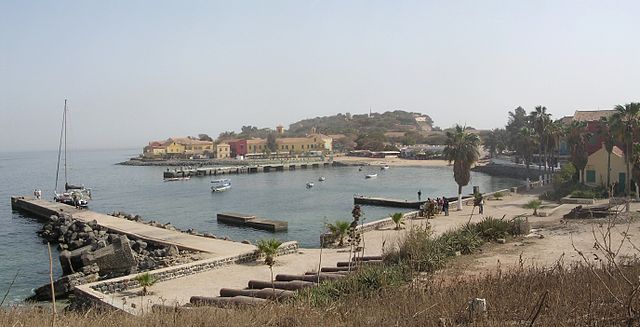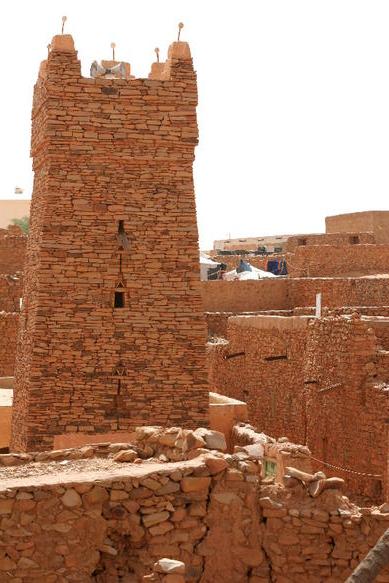West Africa is a fascinating region, and despite the occasional outburst of political instability or virus outbreak, it’s a fantastic place to learn about African cultures and traditions. It was one of the main transit points for slaves to the Americas, and was also home to some of the greatest pre-colonial empires Africa has witnessed, many of the them on UNESCO’s World Heritage List. We hope you enjoy this roundup of the best cultural and historical sites in West Africa.
1) Timbuktu
Nothing evokes a greater image of remoteness and being at the end of the world than the fabled city of Timbuktu in Mali. Founded as a permanent settlement nearly 1,000 years ago, Timbuktu was a major trading outpost and the first and last stop for caravans traversing the Sahara. A center of learning and religion with traditional mud mosques and houses, the city has unfortunately seen better days as Islamic extremists took over the area during their 2012 siege of Northern Mali.
2) Stone Circles Of Senegambia
Head to central Senegal and Northern Gambia and discover the ancient stone circles of the region. Covering a roughly 30,000 square km area, researchers think that these monuments were built between the third and sixteenth centuries, although theories to why they were built still remain elusive.
3) Grand-Bassam
Due East of Abidjan, Cote d’Ivoire you’ll find the French colonial capital of Grand-Bassam. Step back into another era and wander through the town’s abandoned streets and buildings. The capital existed for three years (1893-1896) before yellow fever infections caused the capital and seaport to be moved. Now, little more than a village, there is a National Museum of Costume and a few other sites worth checking out.
4) Ruins of Loropeni
Near the market town of Loropeni lay incredible ruins, stone walls set amidst an arid Sahelian forest. Thought to enclose the courtyard and buildings of Kaan Iya, a former king of the Kaan people, the site is not only Burkina Faso’s only UNESCO World Heritage Site, but also thought to be the best preserved fortified settlement in all of West Africa.

(Joachim Huber/Flickr)
5) Royal Palaces of Abomey
The Royal Palaces of Abomey (the former capital of Dahomey) are a group of earthen structures located in Southern Benin. The palaces were built and inhabited by the Fon people between the early 1600s and 1900s, and 12 kings inhabited the grounds and palace. Interestingly, each new king had a new palace built. Hire a guide to help you explore the grounds and check out the nearby history museum.
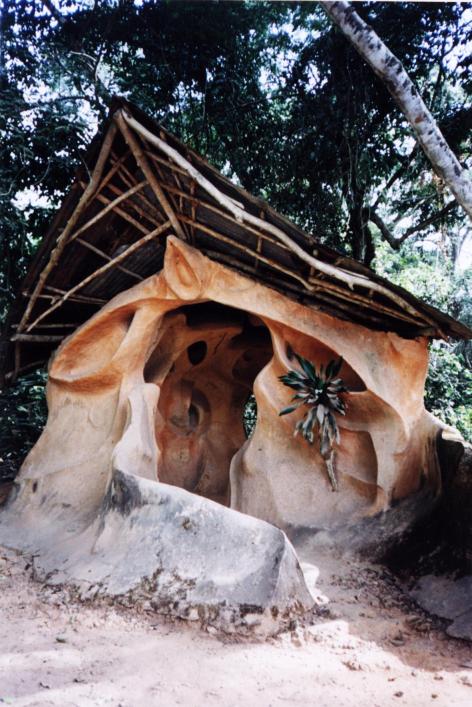
(Alex Mazzeto/Flickr)
6) Osun-Osogbo Sacred Grove
In a beautiful setting along the shores of the Osun River in Southwestern Nigeria, you’ll find the Sacred Grove of Osun-Osogbo. One of the last sacred sites of the Yoruba people, many of the sites, religious ceremonies, and cultural practices have fallen into disuse, especially in the last century. Thankfully, the Sacred Grove is well preserved and every year, thousands gather for the two week Osun-Osogbo Festival which features many traditional ceremonies including the lighting of a 16-point torch.
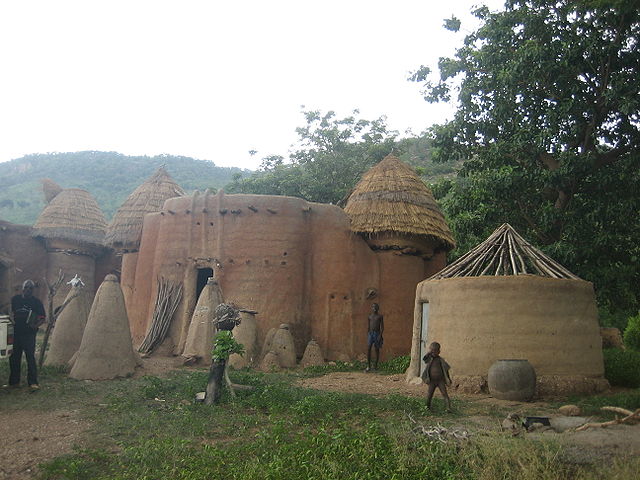
(Erik Kristensen/Flickr)
7) Koutammakou
Koutammakou, the Land of the Batammariba people is found in Northern Togo. Designated as a UNESCO Cultural Landscape, the Batammariba are known for their famous two-story Somba houses which house livestock in the lower level and contain a rooftop courtyard for grain storage and sleeping. These are truly some of the most interesting pre-modern African architectural achievements.
8) Djenne
Rising out of the dusty Sahelian landscape is the towering Great Mosque of Djenne in Mali. Although the original foundations date back to the 1200s, the current structure is over a century old. Not only is the Great Mosque the largest mud structure in the world, but it’s also one of the best examples of Sahelian mud architecture. Recently, Djenne has been on the fringes of what the government controls from Islamic extremists.
9) James Island
Now Kunta Kinteh Island (inspired by the film, Roots), James Island was a crucial gold, ivory, and slave trading post situated in the middle of the Gambia River. While only 15% of its former size due to erosion, the ruins of the fort are still impressive, despite having been abandoned nearly 150 years ago.
10) Saint-Louis
Formerly the administrative capital of French Senegal, the city of Saint Louis was founded in 1659 and named for the French monarch at the time. Throughout the centuries, the city has maintained its characteristically colonial appearance much like other French or Spanish Atlantic colonial cities (i.e. New Orleans). The European city planning and preserved buildings continue to draw tourists as well as nearby national parks and the international jazz festival.
11) Asante Traditional Buildings
A collection of 13 traditional structures in central Ghana, these buildings are the last remaining and best preserved remnants of the once great Asante Empire. Although they are made of earth, wood, and straw, and vulnerable to erosion, most of the buildings are well preserved and are definitely one of the most interesting attractions in Ghana.
12) Tomb of Askia
Askia Muhammed I or Askia the Great was the greatest ruler of the Songhai Empire which at one point stretched from Senegal and Gambia through Mali and Burkina Faso into Niger and Nigeria. Located in Gao, Mali, his tomb is another fine example of Sahelian mud architecture. It’s said he brought back the materials for it returning from hajj in Saudia Arabia, and that his caravan consisted of thousands of camels.
13) Ribeira Grande
The old town of Ribeira Grande in Cape Verde was one of the first colonial outposts in the tropics. Tourists still come to see the old fort, colonial buildings, and cobblestone streets, some of which date back to the 1500s. The town is hands down, the best example of colonial Portugal’s reach in West Africa.
14) Goree
Founded by the Portuguese, trading hands to the Dutch several times, and eventually taken over by France, the island and fort of Goree in Dakar is another place with a dark past. Though not as important to the slave trade as Saint-Louis or James Island, Goree is still more visited. With its view of Dakar and museums housed in the old fort and structures, the island is not to be missed by history enthusiasts or any visitors to Senegal.
15) Ksours of Mauritania
“Ksours” is the Arabic word for castle, and the towns of Ouadane, Chinguetti, Tichitt, and Oualatta were important trade, cultural, and religious centers in Mauritania on the trans-Saharan route. The mud brick and stone sites are fascinating examples of traditional castles, and with few visitors to Mauritania, chances are you’ll have them all to yourself!
Related content on AFKTravel:
These Hearty West African Soups Are Sure To Fill Your Belly
Spirits, Shrines And Spells: The Story Of West African Voodoo
10 Great Walks, Treks And Hikes In West Africa
Want to discover the finer side of Africa? Sign up for our weekly newsletter.
